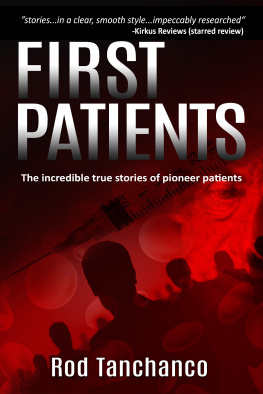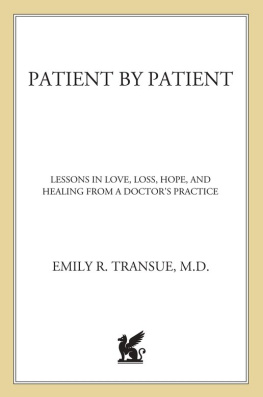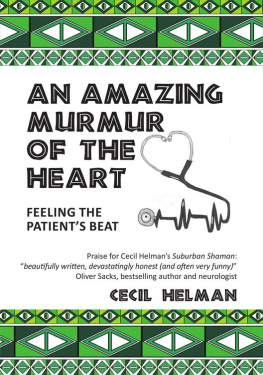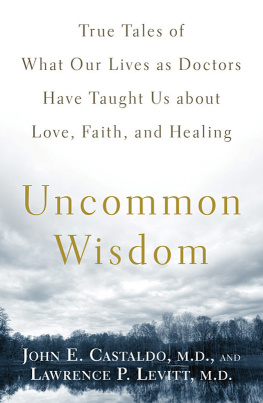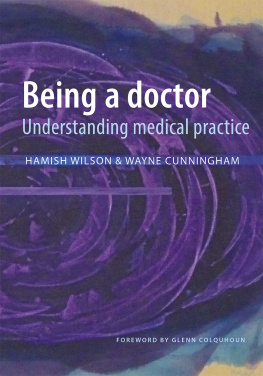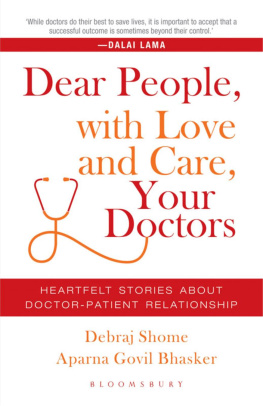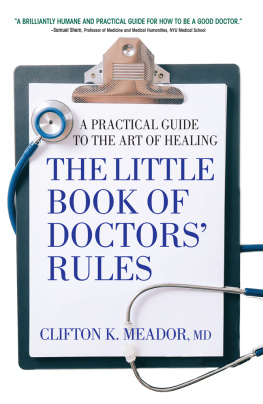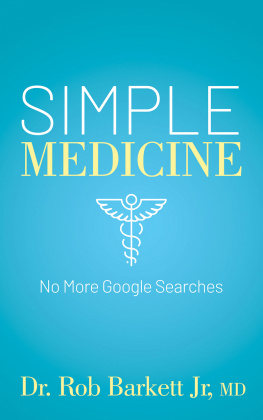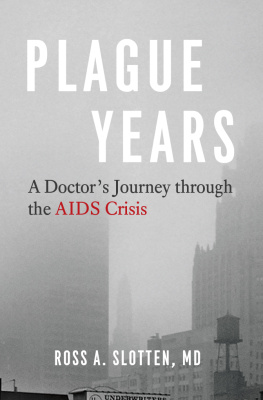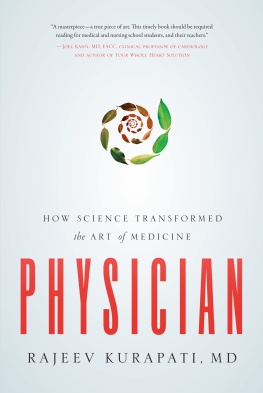First Patients
The incredible true stories of pioneer patients
Rod Tanchanco
First Hawk Publishing LLC, Dover, DE
Praise for First Patients
"Tanchanco tells their stories chronologically and in a smooth, clear style thats impeccably researcheddevoid of potentially off-putting clinical jargon. That approach makes this book ideal reading for anyone intrigued by medical innovations."Kirkus Reviews (starred review)
***
"Like the very best narrative non-fiction writers, Tanchanco is gifted with a prose style that provides clarity of information with the flow of a novelist."---IndieReader (5-star review)
***
"Tanchanco is a captivating writer, and his research into each medical discovery is thorough but always presented with vivid, polished storytelling that will engage readers from the start. Fans of medical history will find these stories highly compelling" ---BookLife
***
First Patientsis a captivating medical history that deals with a subject too often forgotten: the patients whose bravery made todays scientific advancements possible.Foreword Clarion Review
***
"Highly recommend. Dr. Rod Tanchanco has accomplished a rare feat; he has written a history of scientific and medical discovery that privileges the human dimension of discovery, that is, the personal stories, the emotions, the motivations, and aspirations that led men and women to seek out new treatments for diseases..."--Kimba Tichenor, PhD, author of Religious Crisis and Civic Transformation
***
Excellent workGero Htter, MD PhD, physician responsible for the worlds first successful case of HIV cure.
***
Copyright
Copyright 2022 by Rod Tanchanco.
All rights reserved. No part of this publication may be reproduced, distributed or transmitted in any form or by any means, including photocopying, recording, or other electronic or mechanical methods, without the prior written permission of the publisher, except in the case of brief quotations embodied in critical reviews and certain other noncommercial uses permitted by copyright law.
Publishers Cataloging-in-Publication data
Names: Tanchanco, Rod, author.
Title: First patients : the incredible true stories of pioneer patients / Rod Tanchanco.
Description: Includes bibliographical references and index. | Dover, DE: First Hawk Publishing, LLC, 2022.
Identifiers: Library of Congress Control Number: 2021925670 | ISBN: 979-8-9853937-2-9 (hardcover) | 979-8-9853937-1-2 (paperback) | 979-8-9853937-0-5 (ebook)
Subjects: LCSH Medicine--History. | Disease--History. | Disease management--History. | Communicable diseases--Prevention--History. | Physicians--History. | Medical innovations. | Medical scientists. | BISAC MEDICAL / Diseases | MEDICAL / History | BIOGRAPHY & AUTOBIOGRAPHY / Medical
Classification: LCC R145 .T36 2022 | DDC 610/.9/092--dc23
Dedication
For Gail, Mark, Kate, & Zeno
Epigraph
It is much more important to know what sort of a patient has a disease than what sort of a disease a patient has.
William Osler
Preface
E ach year, doctors who wish to renew their medical licenses must complete a set number of continuing education courses. In 2012, as I was reading a typically dry workbook, a strange passage about the invention of the first implantable pacemaker caught my attention. It was a short blurb of a story in the middle of staid medical text. A human narrative in the middle of the technical jargon seemed out of place, like a dandelion in a manicured lawn.
In 1958, a Swedish woman hounded two doctors to create a device to save her husband who was dying from a severe heart block. He had already collapsed dozens of times and had to be resuscitated after each episode. One of the doctors pieced together an ingenious, albeit simple pacemaker, using a Kiwi shoe polish can as a mold. The man survived. I was hooked. Weeks later, I spoke with that womanstill sounding strong-willed and gracious over the phone.
They didnt teach stories like this in medical school. We learned about many luminaries in medicine, of course. Medical texts are riddled with eponyms for diseases, devices, physical exam findings, radiographic signs, fracture names, surgical procedures, anatomical parts, and so on. And yet, the human stories behind the names seemed less important than their contributions to medical science. There are even fewer stories on the patients behind medical milestones.
Ironically, one of the early lessons a medical student learns is the importance of getting the patients story right. Only with the systematic probing of a persons medical history can clues to the diagnosis be teased out. The result is usually a cold, objective account suitable for clinical analysis. The personal narratives, emotions, motivations, and aspirations are often left out.
After learning of the pacemaker story, I wondered about other milestones and the early patients who were involved. That led to my search and discovery of these compelling stories. Some of them are obscure or long forgotten, and some have been written about extensively. There is no particular reason why I included these specific narratives, other than the enthrallment, awe, and disbelief that swept me as I probed the ordeal of real people caught in unique medical dilemmas.
Although the stories are arranged in chronological order, each is distinct so one can read the chapters in any order. Quotes come from the persons own words, either written by him/her or told to me directly. Some were obtained from other authors. I believe the sources are adequately captured and provided in the citations and endnotes. Any errors or inaccuracies are inadvertent, and I hope they do not detract from the essence of the stories.
***
Introduction
P icture yourself waking up in a different world.
And in that world, there is only one antibiotic. Supplies of it are so scarce that doctors must collect your urine to re-extract the antibiotic for the next dose. If youre lucky, it may work, but it cannot treat many infections.
Women with uncontrollable bleeding after childbirth, or anyone with severe hemorrhage, cannot receive blood. Transfusions are not only taboo, but illegal. In fact, doctors treat diseases by flushing out unhealthy blood instead of replacing it. Injecting drugs derived from any animal part is inhuman and revolting.
Deadly, disfiguring viral epidemics strike again and again, killing your neighbors, friends, and family. Your only option is to flee, or perhaps inject the fluid from the boil of an infected person into your arm, and hope you develop an immunity. People blame immigrants or travelers for introducing new diseases to the community. They block roads and ports, refusing to help refugees. Some abandon family at the first sign of an epidemic.
It is a world where people contract strange diseases that baffle all experts, and none of the physical signs, symptoms, and test results make sense. Autopsies, or any human dissection, are forbidden. Doctors conduct medical experiments on people without consent or oversight. The more adventurous experiment on themselves and sometimes die trying to prove a point.
No one in this world has ever heard of CPR. If someone collapses from cardiac arrest, their best hope for survival is to do it in a hospital or have a heart surgeon nearby. With any luck, that surgeon may carry a pocket knife to slice the persons chest and massage the heart by hand. There are no defibrillators. There are no cures for any disease.

